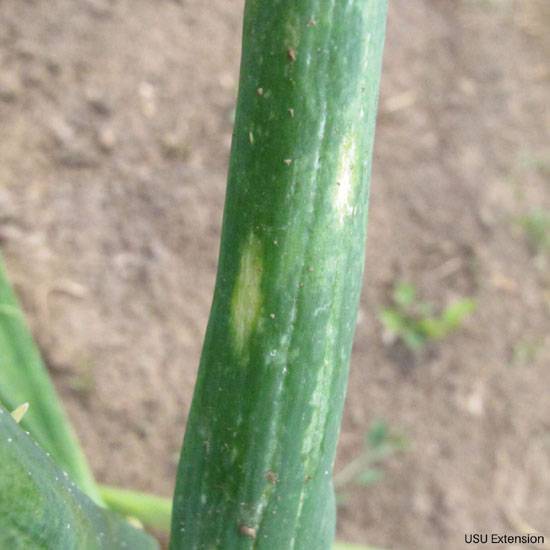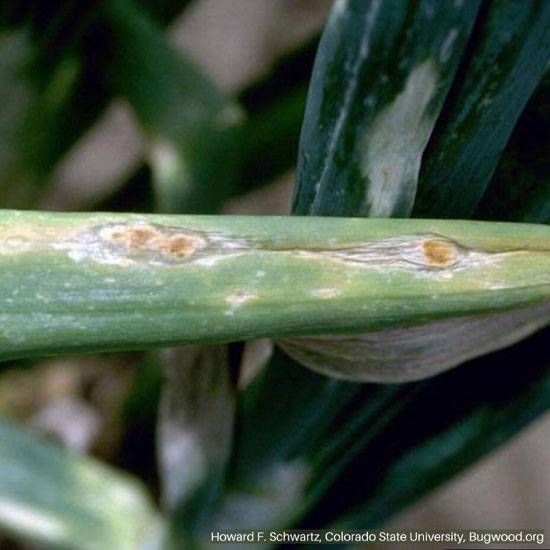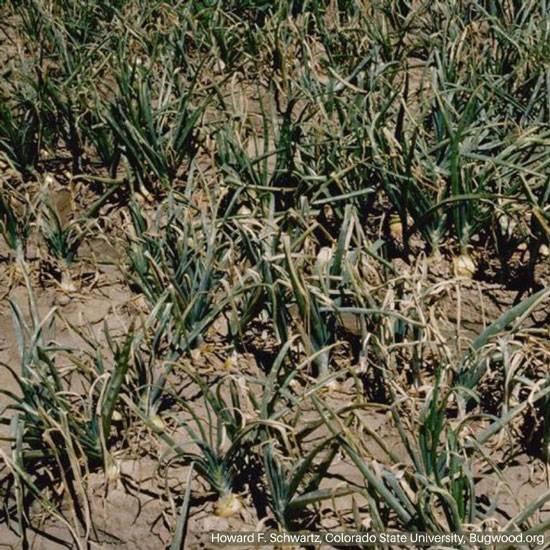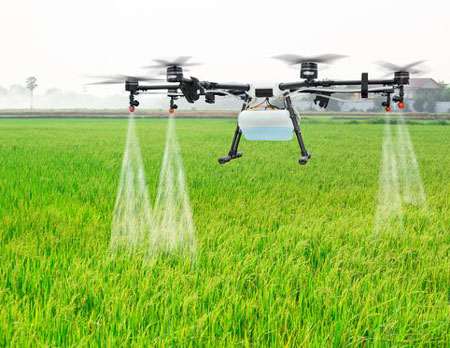Onion
Iris Yellow Spot Virus (IYSV)

Vector: Thrips
Viral Disease

Vector: Thrips
Viral Disease

Vector: Thrips
Viral Disease
Iris Yellow Spot Virus (IYSV) is a serious disease affecting onion crops, primarily spread by onion thrips (Thrips tabaci). This Tospovirus can cause significant damage to onions, reducing both yield and quality, making it a major concern for onion growers.
Symptoms of IYSV
The symptoms of IYSV are varied and can include:
- Early signs: Concentric oblong, light oval-shaped rings.
- Light green, diamond-shaped areas on the leaves.
- Concentric green and tan oval-shaped rings.
- Tan necrotic spots with green islands within the necrotic areas.
As the disease progresses, these lesions expand and may lead to widespread damage, weakening the plant and reducing harvest yield and bulb quality. Infected onions often show the highest incidence of disease near field edges.
Spread of the Disease
The pathogen is transmitted by onion thrips, which acquire the virus during their nymph stage. Once infected, the thrips can spread the virus as adults by feeding on healthy plants. The disease is capable of overwintering in volunteer onions and overwintering thrips, which allows it to persist from one season to the next.
Weeds such as jimsonweed, redroot pigweed, and other plants like iris and lisianthus can also serve as hosts for the virus, further contributing to its spread.
Management and Risk Factors
One key factor that exacerbates IYSV is excessive nitrogen fertilization, which attracts onion thrips and increases disease severity. Thrips populations tend to thrive in stressed onion plants, and the degree of susceptibility to IYSV can vary depending on the onion cultivar and environmental conditions.
Effective management involves controlling thrips populations, avoiding excessive nitrogen application, and planting more resistant onion varieties when available. By managing these factors, farmers can minimize the impact of IYSV on their crops.




